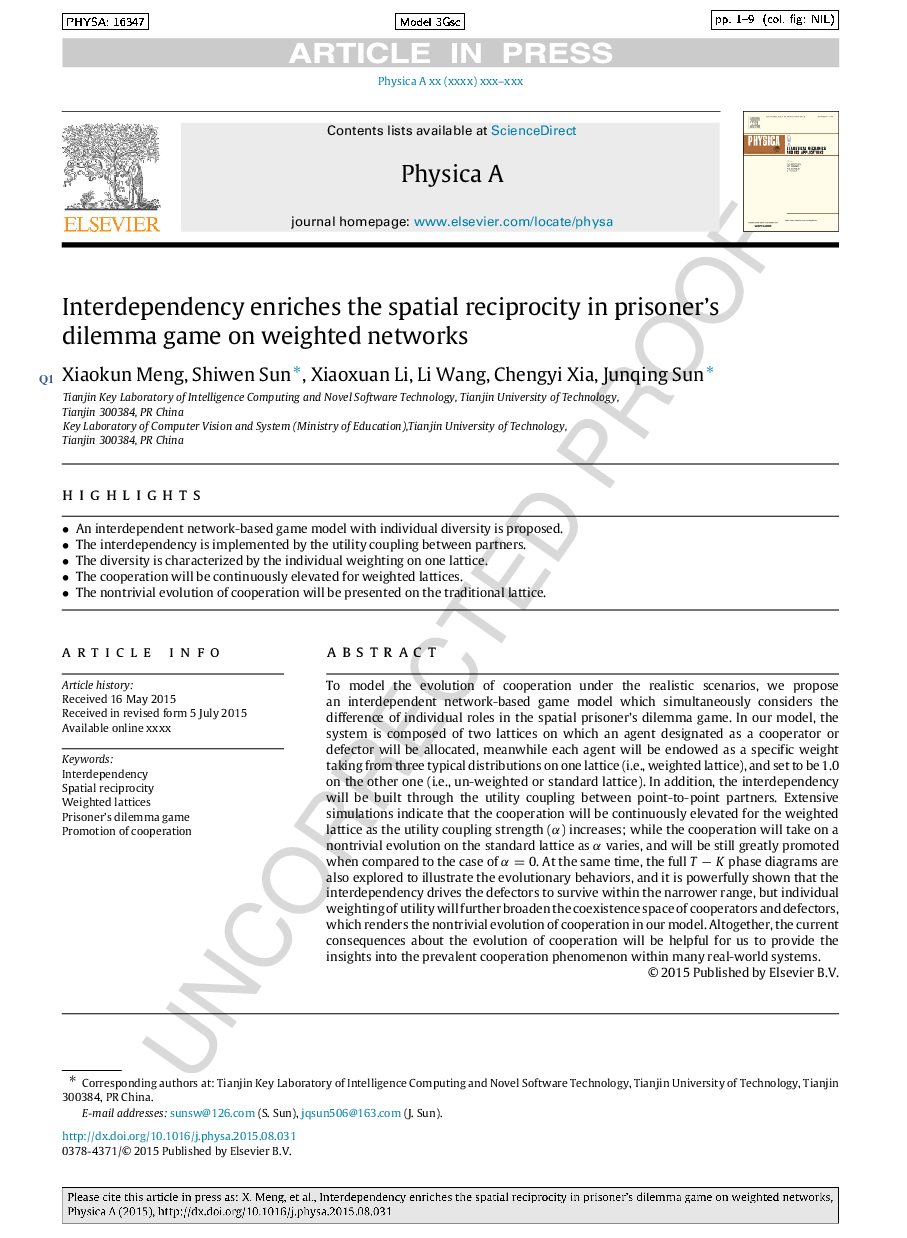| Article ID | Journal | Published Year | Pages | File Type |
|---|---|---|---|---|
| 7379130 | Physica A: Statistical Mechanics and its Applications | 2016 | 9 Pages |
Abstract
To model the evolution of cooperation under the realistic scenarios, we propose an interdependent network-based game model which simultaneously considers the difference of individual roles in the spatial prisoner's dilemma game. In our model, the system is composed of two lattices on which an agent designated as a cooperator or defector will be allocated, meanwhile each agent will be endowed as a specific weight taking from three typical distributions on one lattice (i.e., weighted lattice), and set to be 1.0 on the other one (i.e., un-weighted or standard lattice). In addition, the interdependency will be built through the utility coupling between point-to-point partners. Extensive simulations indicate that the cooperation will be continuously elevated for the weighted lattice as the utility coupling strength (α) increases; while the cooperation will take on a nontrivial evolution on the standard lattice as α varies, and will be still greatly promoted when compared to the case of α=0. At the same time, the full TâK phase diagrams are also explored to illustrate the evolutionary behaviors, and it is powerfully shown that the interdependency drives the defectors to survive within the narrower range, but individual weighting of utility will further broaden the coexistence space of cooperators and defectors, which renders the nontrivial evolution of cooperation in our model. Altogether, the current consequences about the evolution of cooperation will be helpful for us to provide the insights into the prevalent cooperation phenomenon within many real-world systems.
Related Topics
Physical Sciences and Engineering
Mathematics
Mathematical Physics
Authors
Xiaokun Meng, Shiwen Sun, Xiaoxuan Li, Li Wang, Chengyi Xia, Junqing Sun,
